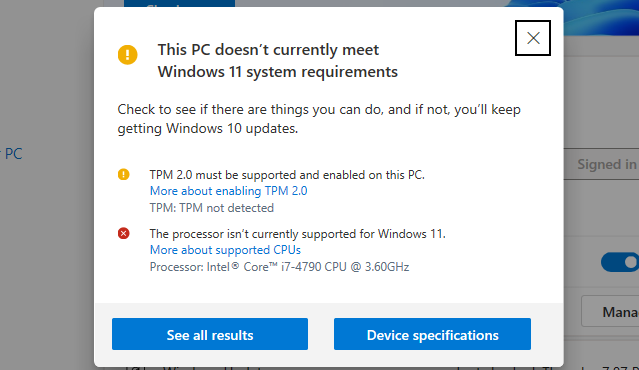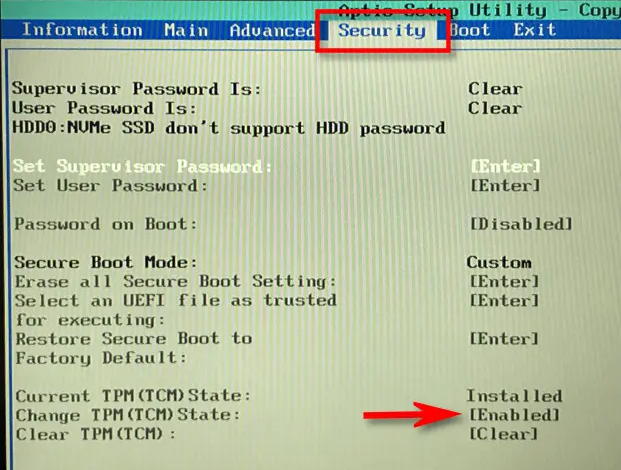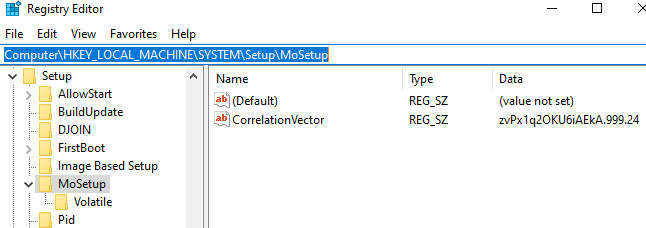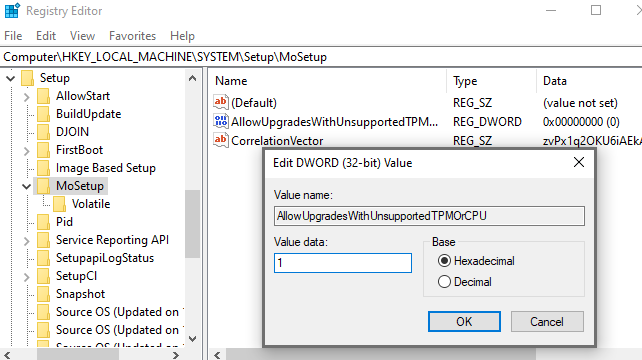Windows 11 has strict system requirements, however there are solutions to these requirements. For instance, it needs at least an 8th generation Intel, AMD Zen 2 or Qualcomm 7 or 8 Series CPU, but it is possible to download windows-11 rajkotupdates.news on PCs with older processors.
Do You Need to Upgrade Your Unsupported PC?
Let’s get this out of the way If you’re on the fence, we’d advise against updating your PC that isn’t supported with Windows 10 to Windows 11. Windows 10 will be officially supported by security updates through October 2025.
Windows 11 doesn’t have any major features which make it an essential upgrade and Microsoft warns that computers that aren’t supported could be affected by problems. Actually, Microsoft warns that it might eventually stop offering security updates for PCs not supported that run Windows 11.
If you’re keen to install Windows 11 on unsupported hardware We’ll assist.
Whatever you decide to do it is recommended to backup your most important data first. It’s important to always have an backup, particularly when you upgrade to a new operating system. This is especially true when that software isn’t compatible with your hardware.
Tips: In some situations you may be able to make your PC official supported by an adjustment to the configuration or two.
What to Do to Find Out the Reasons Your PC isn’t supported | windows-11 rajkotupdates.new
You can determine whether Windows 11 supports your PC by installing the application and then using the Microsoft PC Health Check app.
If your computer is compatible with Windows 10, moving from Windows 10 to Windows 11 is easy. It’s only a couple of clicks.
In the event that Windows 11 doesn’t officially support your computer The PC Health Check will say that it “doesn’t yet meet the Windows 11 system requirements” and will explain the reason. If the program reports that your PC as not supported The procedure you’ll need to follow will be based on the issue it identifies. You might need to alter a setting within the computer’s UEFI firmware (the modern version of your BIOS) to ensure that your computer is compatible, or it could be more complicated.


Also Read : Rajkot Updates News Elon Musk Pay 11 Billion in Taxes in 2022
How do you enable TPM 2.0 | windows-11 rajkotupdates.news
Windows 11 officially requires TPM 2.0. (However there’s an easy method of installing Windows 11 if your PC is running the TPM 1.2, which we’ll go over further down.)
If the tool says that your system doesn’t have TPM, there’s a good chance your computer does have TPM, but it might have been disabled as a default.
To determine if you are able to enable TPM 2.0 to be enabled, you’ll have to input the system’s UEFI software settings (the modern version of your BIOS). You should look for a setting that is something such as “TPM,” “Intel PTT,” “AMD PSP fTPM,” or “Security Device.” You may find it in the main UEFI settings menu, or in an option menu that is named “Advanced,” “Trusted Computing,” or “Security.”
For more details, go on a search engine online for find the model number of your PC and “enable TPM” or look through its official documents. (If you built your own computer look up your motherboard model instead.)
You might also have to install an UEFI update for your PC or motherboard. Manufacturers have been releasing updates that enable TPM 2.0 by default or provide TPM 2.0 support. It is an option to change to TPM 1.2 up to TPM 2.0 by implementing an update to the firmware on certain PCs. It is contingent on the hardware and system manufacturer. Make sure to contact your system (or motherboard) manufacturer for more details about updates available for Windows 11.



How do I enable Secure Boot? | windows-11 rajkotupdates.news
In the event that PC Health Check reports your system isn’t using Secure Boot you must be looking in UEFI firmware settings to find the “Secure Boot” option and enable it, if you can.
If you’re able activate Secure Boot, re-run the PC Health Check tool. It is now possible to upgrade as normal, assuming Secure Boot was the only issue.



How to fix the issue of no UEFI (MBR instead of GPT) | windows-11 rajkotupdates.news
Windows 11 requires UEFI. Certain older computers support two options either UEFI firmware or an older-style BIOS.
If you’re using an “traditional” partitioning configuration however, your computer has UEFI in the form of an alternative, you’ll be required to switch to an GPT partition table in order to utilize UEFI.
There are a variety of ways to achieve this. Microsoft’s MBR2GPT tool could permit users to convert drives to MBR in GPT format.
Microsoft cautions you to only use it if know that your PC is compatible with UEFI and you might need to alter settings in the firmware of your PC to let that it start in UEFI mode, instead of the conventional BIOS mode later on.
If you’re experiencing this as your sole issue, a better option is to do an entire clean installation. Make sure you backup your data (we suggest backing up your data prior to upgrading in any way.) Then, you can utilize Microsoft’s media creation tool for creating bootstrappable Windows 11 installation media on either a DVD or USB drive. Then, you can utilize the installation media to carry out the clean install on Windows 11, wiping your drive. You might need to set your computer’s firmware in UEFI mode before you can do this. Windows 11 will erase your Windows 10 system and set up your drive in GPT mode.
Registry Hack for CPUs Not Supported and/or TPM 1.2 | windows-11 rajkotupdates.news
If the only issue is that your computer is running an unsupported CPU or it has only TPM 1.2 instead of TPM 2.0 it is the easiest issue to solve.
If you want to this option, you can bypass this limitation with an easy Windows Registry change. The change you make can result in Windows 11 to ignore the CPU version check and install in the event that the TPM is just 1.2 is available. But, it won’t completely eliminate other types of checks. For example that if your system does not have a TPM even if it does the registry change won’t permit you to upgrade.
Warn: The Windows Registry is complex and you must be aware of the information you enter, modify or delete within it. It could result in problems for or disrupt your Windows installation. If you’re not comfortable with editing the registry, then you might prefer not to upgrade. But, as that you follow our guidelines here there shouldn’t be any issues.
To begin, you must launch The Registry Editor. It is possible to press Windows+R or search for “regedit” and press Enter. Or, enter “registry” within the search box in the Start menu and click on the “Registry Editor” shortcut.






Right-click on the right side of the screen and select NEW >DWORD (32-bit) Value and type the following text in the name:
AllowUpgradesWithUnsupportedTPMOrCPU



Double-click the “AllowUpgradesWithUnsupportedTPMOrCPU” value here, set it to “1”, and click “OK.”



Do you want to avoid the registry editing procedure? Download our registry hack to change the registry with just a few clicks.
The downloadable ZIP file includes two REG files: one which allows upgrades for unsupported computers (Enable unsupported Upgrades.reg) and another that reverses the upgrade (Undo enable Unsupported Upgrades.reg). Simply double-click on in the “Enable Unsupported Upgrades.reg” file and accept to save the information in your registry. If you wish to reverse your changes, double-click to open the Undo file.
These files work in the same way as the above registry hack–they just set the “AllowUpgradesWithUnsupportedTPMOrCPU” value to “1” (to enable unsupported upgrades) or “0” (to revert to the default setting).



To ensure that the change is in effects, you must reboot your computer prior to proceeding.
Download and use this Windows Install Assistant tool on Microsoft’s site to upgrade your computer up to Windows 11, just as you would if it was equipped with a compatible computer or TPM 2.0. You’ll need to agree to a caution first.
NOTE: Bear in mind that this can only do 2 things. It lets Windows 11 ignore the CPU requirement, and lets Windows 11 install with TPM 1.2 instead of TPM 2.0. This won’t be able to circumvent other rules. For instance, if your PC doesn’t have a TPMS in any way or only an old BIOS in place of UEFI firmware the registry option won’t do anything to help.
PCs that have no TPM, or No UEFI, or Any Other Major Issues | windows-11 rajkotupdates.news
If the above tips and the registry hack don’t seem to be enough for your computer the situation is about getting a little tricky. If your PC doesn’t have an TPM in any way such as, for instance the case, it’s actually not supported.
There are methods for you to download Windows 11 even if you do not have TPM 1.2 and UEFI. However, this is not the case. Windows 11 is unsupported, and you’re more at the risk of getting into problems and not receiving any new security upgrades if hack your way around the basic requirements. There are also diverse reports of success by people who’ve used these methods.
If it does work on your behalf, an upgrade within a few months could cause your computer to blue-screen or even breaking the operating system and requiring you to install Windows 10.
We suggest you avoid any of these tricks that are extremely risky, as you’re creating a risk for yourself.
Windows 10 will function just perfectly until October 2025 and you’ll likely need to upgrade your PC by then If your current one isn’t even compatible with TPM 1.2.
